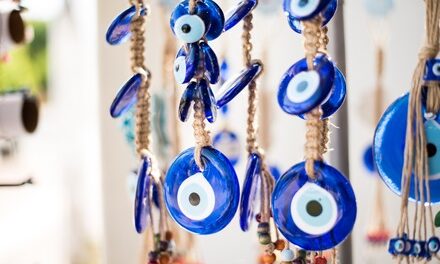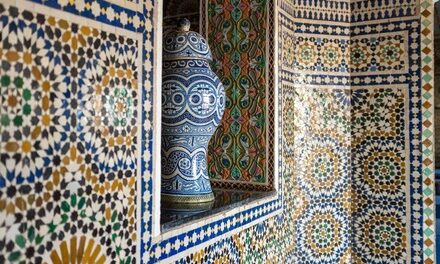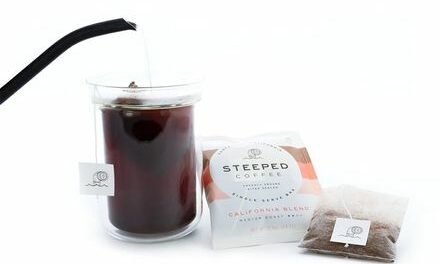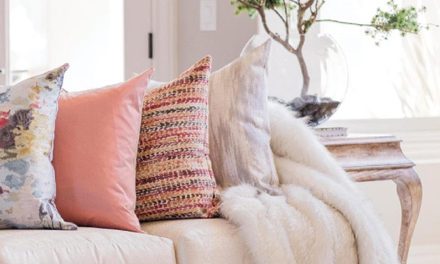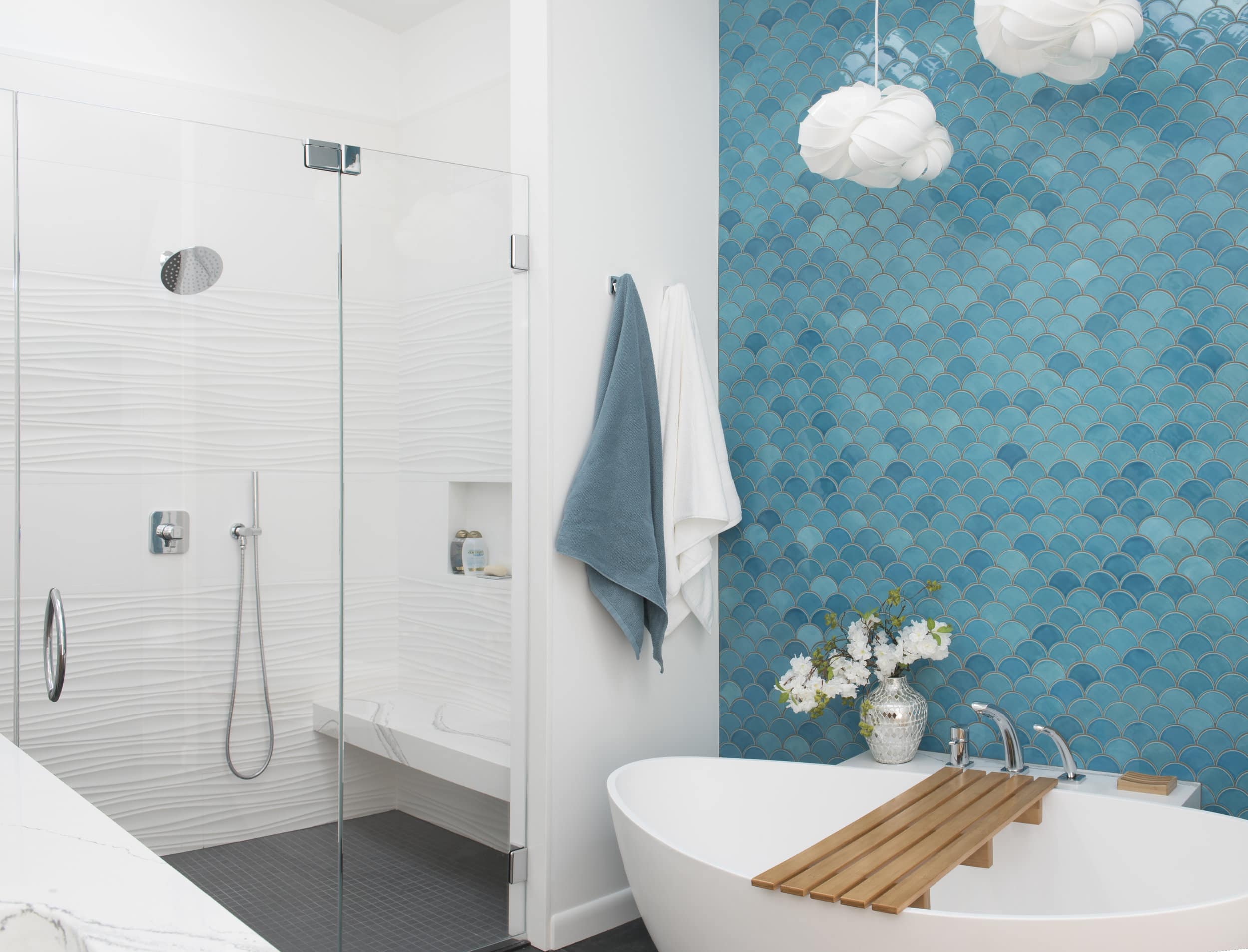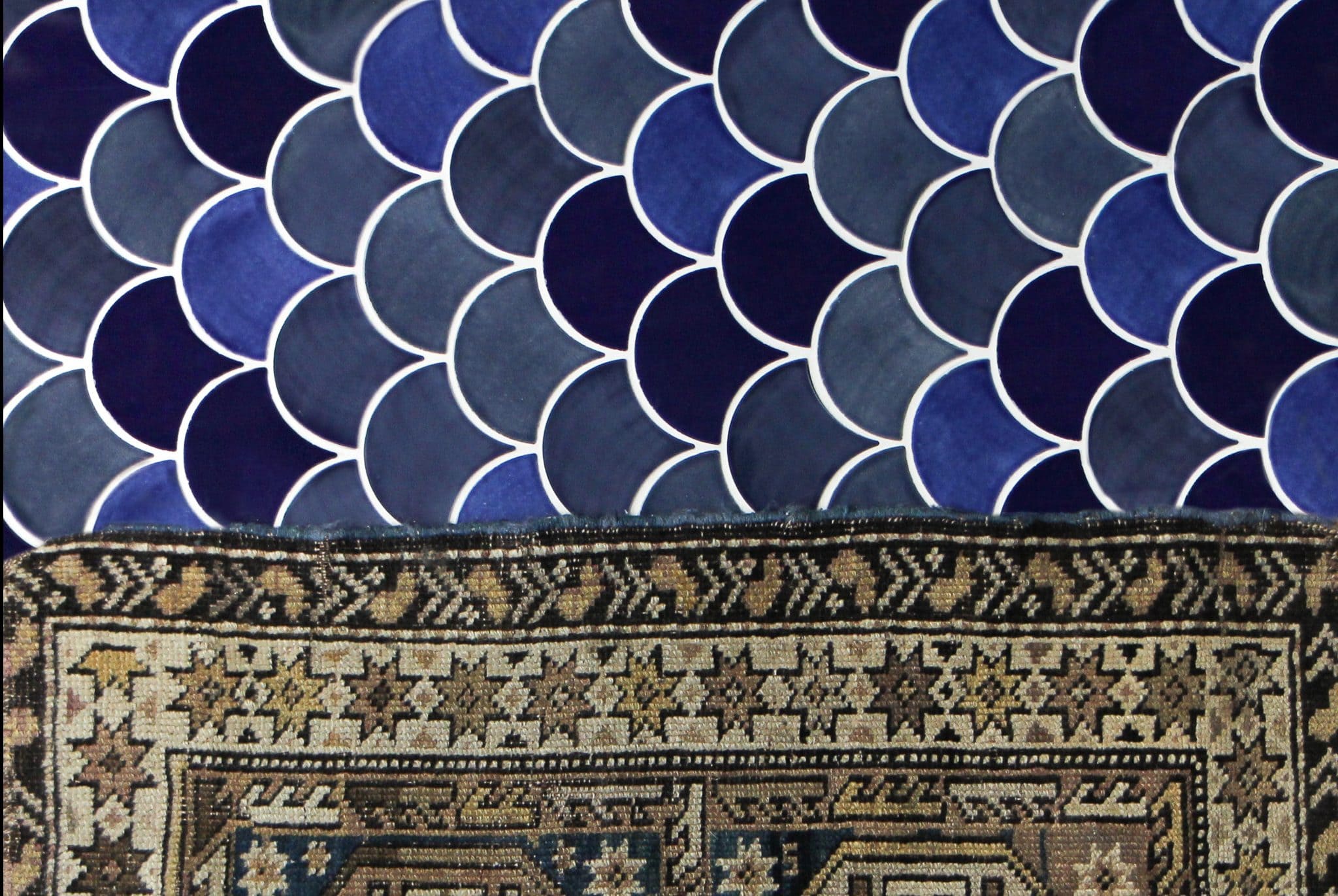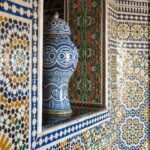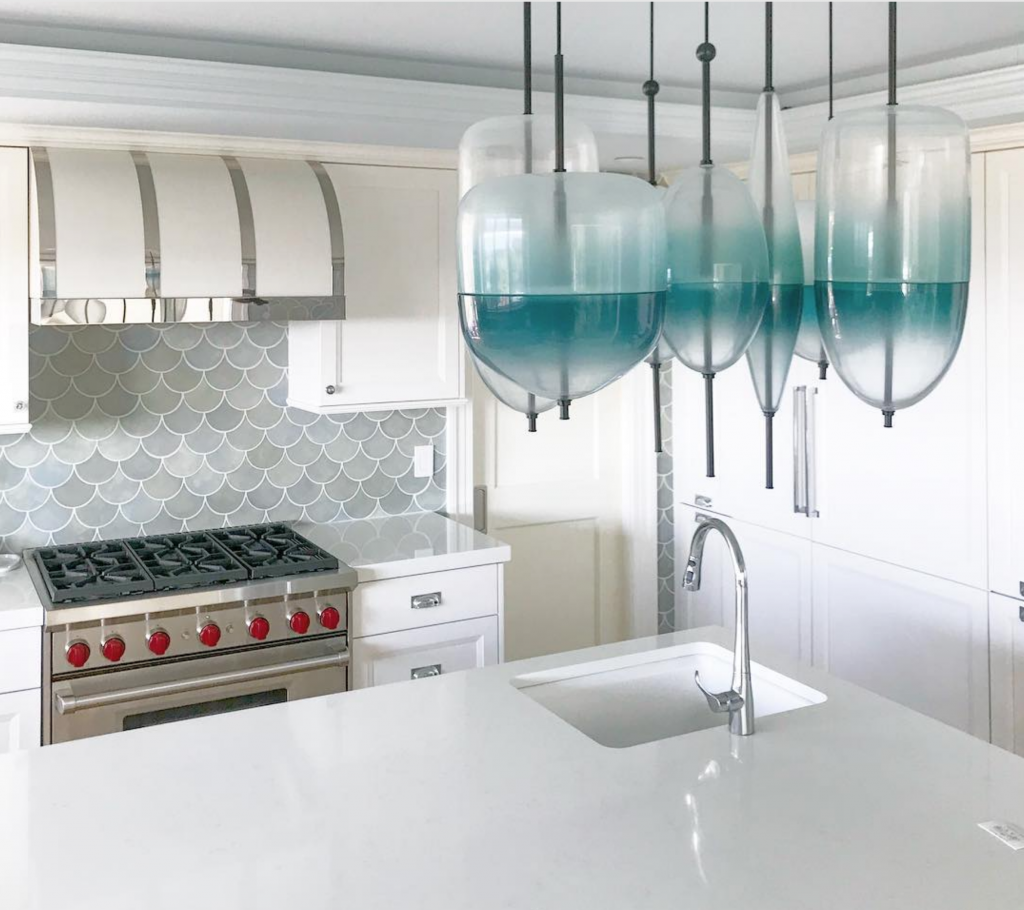
Shape, texture and rich, earthy colors expand the options in how one can bring Mediterranean chic into the home.
When most people think of Moroccan tile, they think of ornate jewel-toned squares in a riot of patterns. For centuries, the stylish artisanal material has found its way onto building exteriors and inside homes worldwide, from Portugal and Spain to Mexico, Macau, Brazil and India. It is also markedly functional, as it keeps interiors cool in warmer months when used on exteriors and is easy to maintain and disinfect when used indoors. It’s a timeless decorative medium that’s literally all over the map.
Like many contemporary design motifs, the origin of these designs date back several centuries. Following the Moors’ conquest of Spain in 711 A.D., a variety of artistic techniques arrived in Europe, including a unique way of painting ceramic tiles called ‘Zellige,’ or ‘azulejo’ in Spanish and Portuguese, consisting of complex geometrical forms. The aesthetic emerged as a creative decorating solution as Muslims of the time. As strict Islamic law dictated they could not depict living beings in their decor, they instead expressed themselves through shapes.
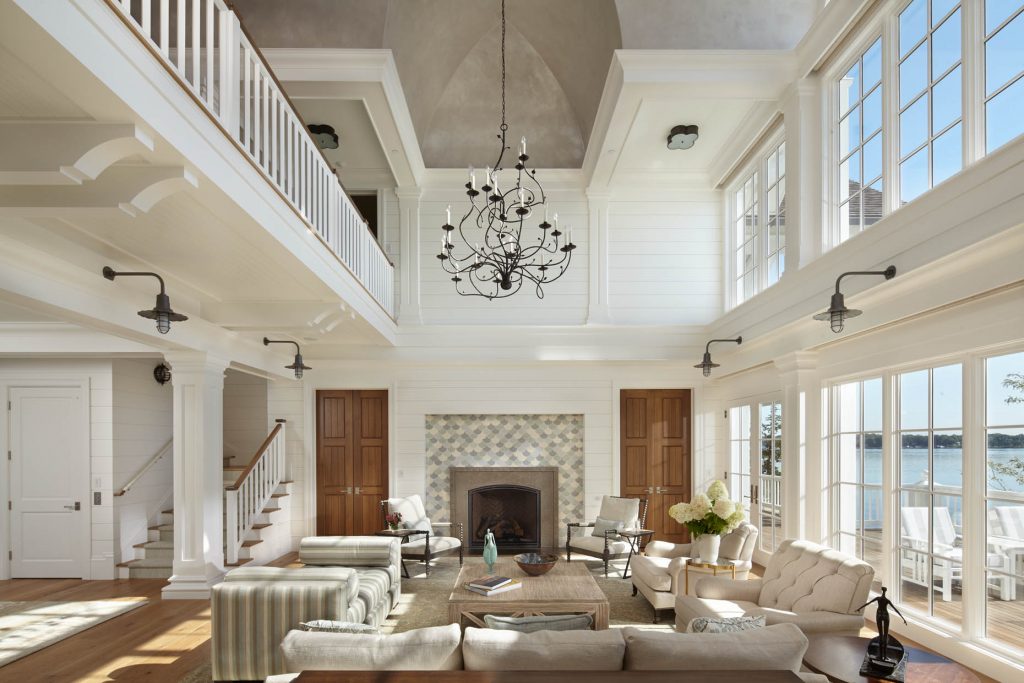
Lake Minnetonka Cedar Point Home, Streeter and Associates, Andrea Swan Architect, Katie Redpath Constable Interior Design, Karen Melvin Photography, white interior, white kitchen, lake home, netrual and white, three story, sleeping porches, soft colors, tile, hardwood floor, light, dog, Sub Zero, Wolf, Lake view, blue Sky, orthagonal, comfort, home, clean lines, two story living room, wine cooler, double oven, chandelier, artist.
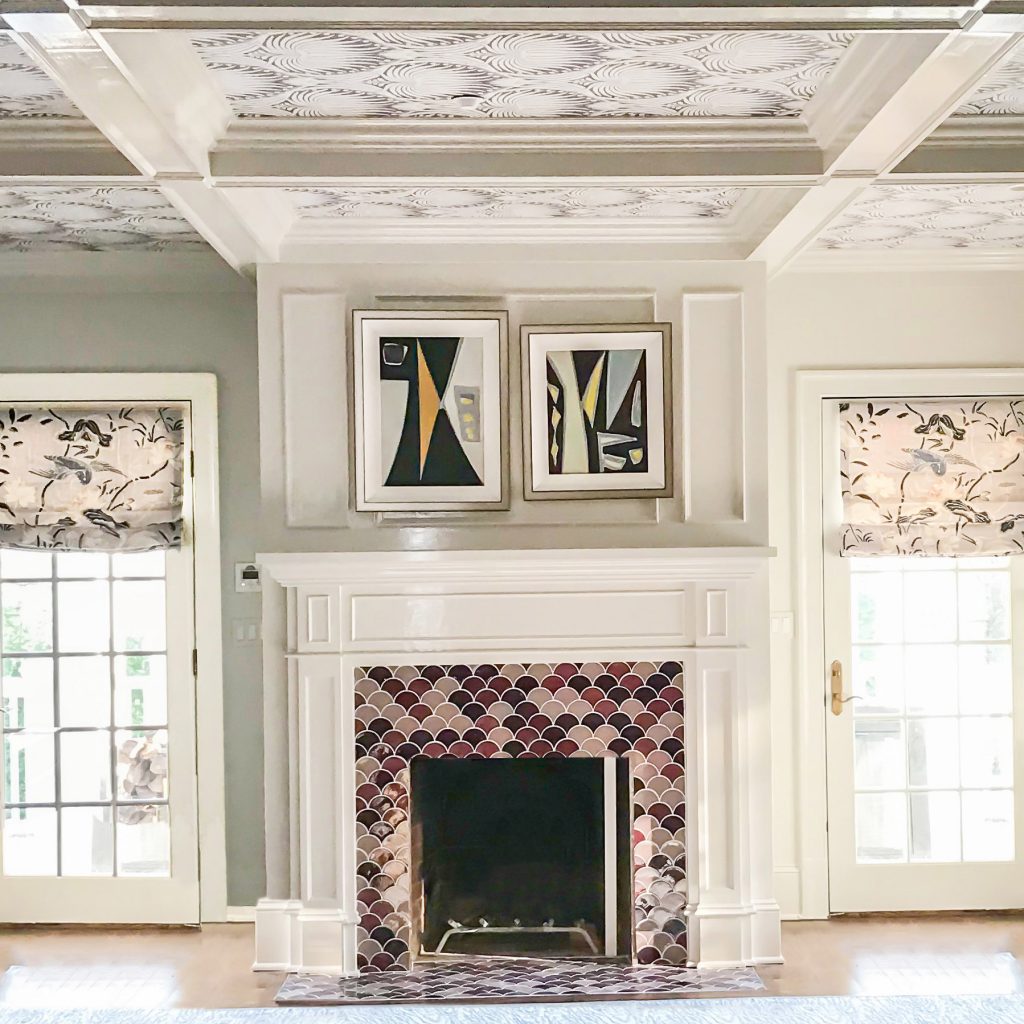
Depending on a home’s architecture and the lifestyle of its owners, use of patterned tiles can enliven a kitchen, bathroom or patio. While a capable interior designer has a good sense of how and where these bursts of color will work in some homes, others—particularly those with contemporary architecture or more sedate color schemes and furnishings—are better served when the patterned tiles are used as accents…or not at all.
In the former scenario, Mercedes Austin, founder of Mercury Mosaics, is showing her discerning client base that there are ways to use modified versions of design traditions originating in Morocco, and that they can be used in ways that enliven, but never overpower, a kitchen or bathroom. Her adaptation of the fish scale shape offers an alternative that’s less busy than patterned tiles but can be equally evocative.
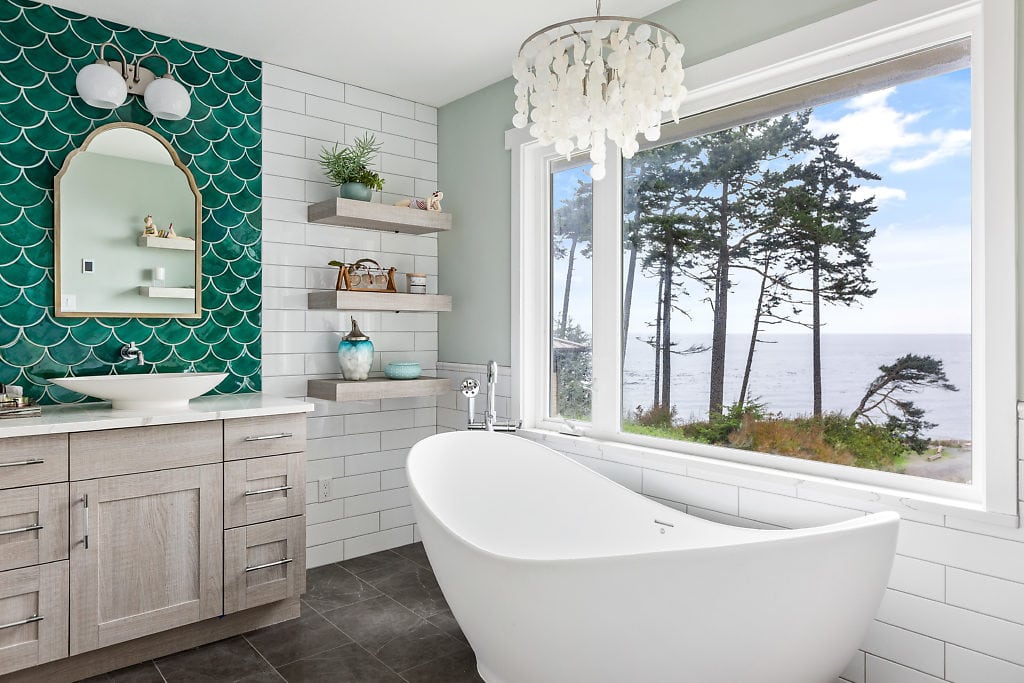
“Patterned tiles can look dated in a setting if they are not used to tell a cohesive visual story,” Austin explains about the shift away from all-over patterned tiles. “If they’re plopped into the space without mindfulness, this is where I see (the aesthetic) looking dated. To not overcomplicate (your space), choose tiles with finishes that make you feel good, things that you’re drawn to and consult a design professional on curating these patterned items in your space. The professional’s job is to take what you love and marry it with the functionality of your home space.”
This is where Austin’s revival of the versatile fish scale shape in different sizes and tonal arrangements come in. She explains that if a homeowner’s design goal is to achieve timelessness, her approach of applying the fish scale shape with a refined execution of color tones results in a canvas that sets the feel of the room. The intentionality in the approach ensures the space will be modern and age well, and you can see example of how she makes it work in the photos accompanying this story as well as her Instagram account.
“We’re seeing intentional choices thoughtfully placed versus patterns everywhere,” she continues, also stressing the importance of working in tandem with professional designers, contractors and/or architects who keeps tabs on current design trends. Being intentional with tile choices is also being sustainable and sensible in how your money is spent. More thoughtful choices in tile means you won’t be redoing your walls every ten years and adding to landfills with old materials that have been ripped out to be replaced.
“With this mindfulness comes the drive to have pieces that have a story and a long lasting quality. Tone on tone with the fish scale pattern is really lending itself to this shift. Our first goal at Mercury Mosaics is to listen to our clients and their designers to understand where they’re at. Through listening to them, we’re able to learn the best way to support them relative to their project goals. With this said, the journey can be pattern-led, color-centered or can be full blown coordination with the architect and all the elevations.”
Another advantage to sticking with one color or color family is that it allows the tile shape to provide the visual interest if there are other, major architectural elements in the space already telling the story of the home. Austin notes that walls and backsplashes that feature two or three colors work best when they are intended to highlight a specific point in a room. However, should you decide that a statement wall could work, she suggests discussing the mural or visual focal point you wish to create should be worked out with your designer to ensure the result in real life will work as well as the original concept.
With the right tools, cleansing solutions and techniques, tiles can also be easy to clean and maintain an important consideration if you are using the COVID-19 shelter-in-place period to upgrade your home.
“I recommended a mild dish-washing soap with water and a non-scratching sponge or cloth for day-to-day use,” she says. “However a neutral pH cleaner specified for tile should also be on hand. Avoid using any cleaning products that contains acids like vinegar or lemon. With the grout that holds the tiles together, it’s important to note that there is conflicting data on germ-killing versus safe for grout, so sometimes you have to just use your best judgment. Periodic light maintenance will do wonders for keeping tile looking new and safe.
For more information, visit mercurymosaics.com.
—————————————-
Photo & Design Credits:
Photographer: Snowberry Lane Photography
Instagram: @snowberryphoto
http://snowberryphoto.com/
Interior Designer: Tree Frog Design
Instagram: @tree_frog_design
https://www.treefrogdesign.net/




